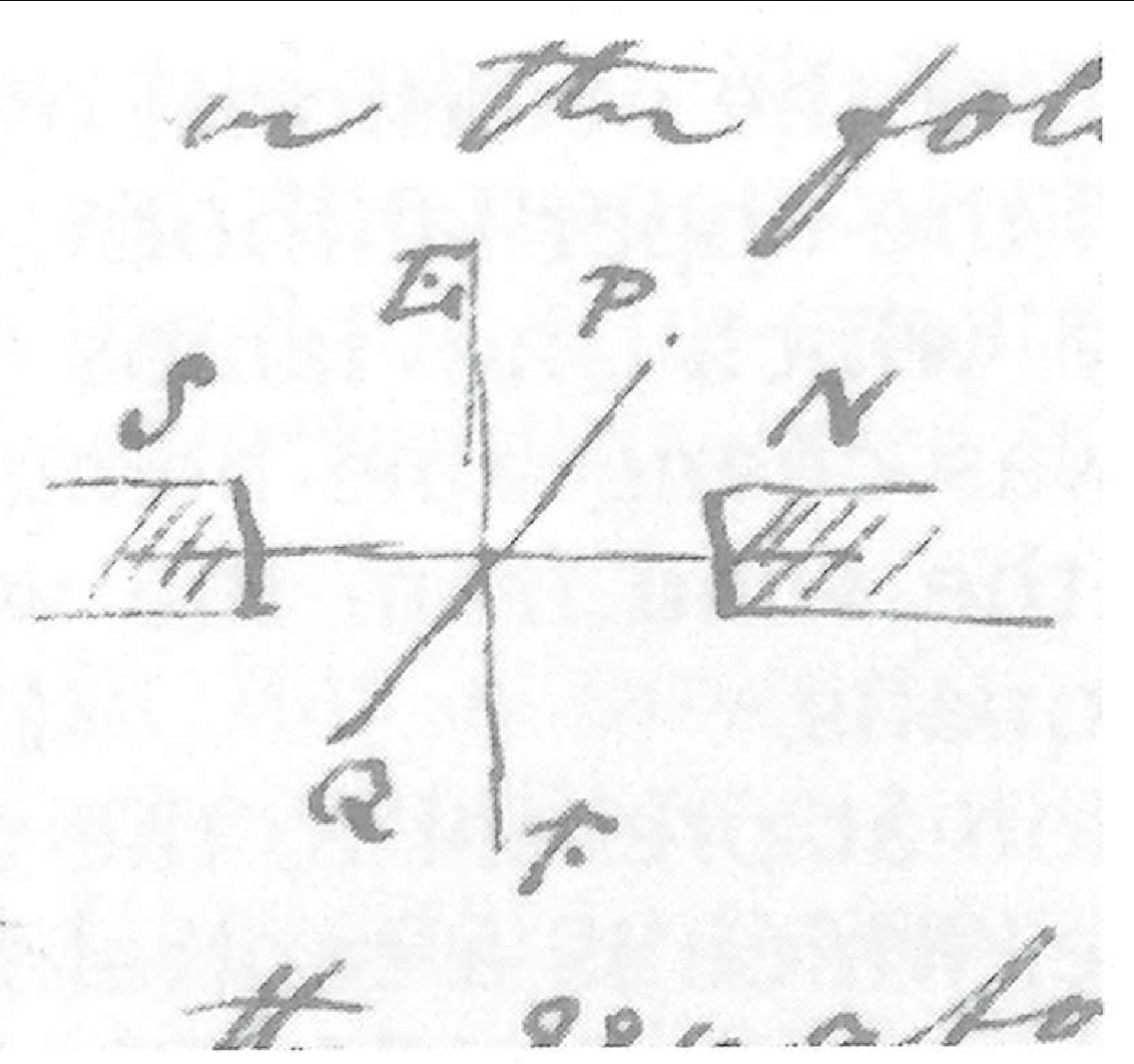George Whitehead Hearn to Faraday 22 January 18471
22 Jan. 1847 R.M. Coll | Sandhurst | Berks
Sir
I have read and studied with intense delight your admirable researches on the action of Electro-magnets on magnetic and diamagnetic substances2. It will be within your recollection that some time ago I sent you a paper on the mutual action of voltaic currents3 which has since been published in the Mathematician4 a periodical emanating from Woolwich. I there proved on Ampère's5 theory that the mutual action of two small closed currents is not wholly in the line joining their centres when the planes of the currents are inclined to that line and I conceived that if a wire wound round a hard iron core not previously magnetic as an elliptical spiral thus

and an electric current put through it for some time & then the core removed and suspended so that the minor axis of the induced elliptical currents might be vertical that a motion of rotation would ensue which would continue so long as the iron core might be capable of retaining this peculiar magnetic state. I fancy that I see in your experiment with a piece of copper wire inclined to the 'axial' & 'equatorial' positions some confirmation of my researches & would explain the phenomenon of rotation arising from what you term 'revolution' in the following manner[.]

Let PQ represent the wire. Currents whose planes are parallel to the equatorial plane EF are induced by the magnet in the copper wire and then by their mutual action would tend to make the wire revolve in the direction PES while the action of the magnet on them would tend to produce rotation in the contrary direction EPN. On the cessation of the magnetic action there remains only the mutual action of the induced currents & the wire therefore revolves in direction PES until it loses the peculiar magnetic state. Now if a needle (not previously magnetic) were by extraneous force held in the position PQ and the magnetic action continued for some time I think it highly probable that on the cessation of the magnetic action & the withdrawal of the extraneous forces it would continue to revolve longer than the copper wire. A paper of mine will 'ere long be communicated to the Royal Society which I hope will interest you as it proves that in addition to the mutual gravitation of two diamagnetics there exists a magnetic action which on turning one of the masses round a vertical axis through 180˚ becomes of contrary name & nearly equal intensity6[.]
I have the honor to be | Sir | Your most obedient servant | Geo W. Hearn
Dr. Faraday | &c &c &c
Bibliography
HEARN, George Whitehead (1846): “Required the mutual action of two indefinitely small plane closed voltaic currents”, Mathematician, 2: 160-2.
HEARN, George Whitehead (1847): “On the Cause of the Discrepancies observed by Mr. Baily with the Cavendish Apparatus for determining the mean density of the Earth”, Phil. Trans., 137: 217-29.
Please cite as “Faraday1954,” in Ɛpsilon: The Michael Faraday Collection accessed on